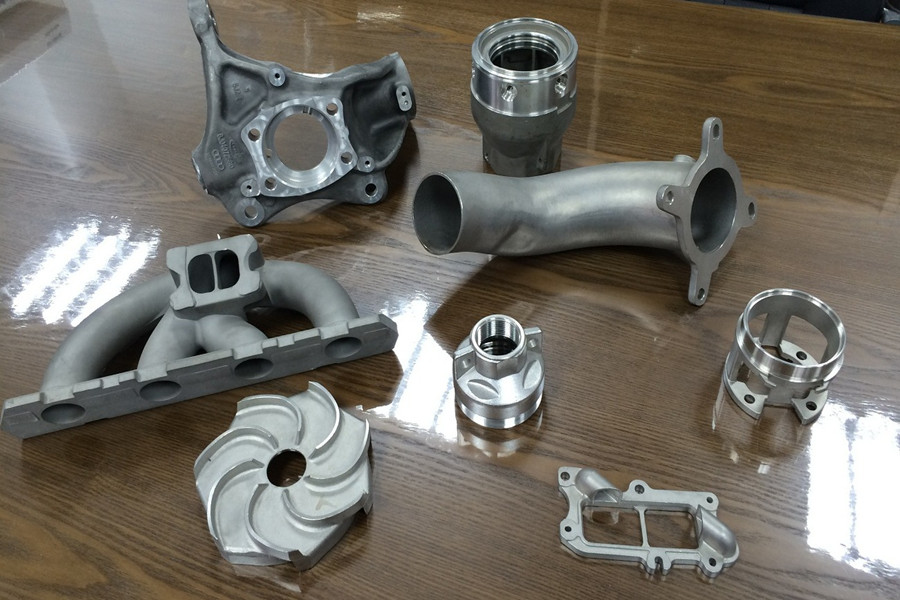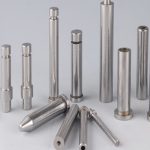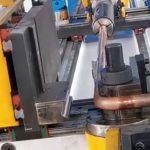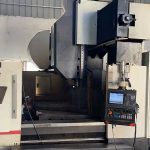The dredging pump is a professional pump used in the dredging industry recently. The flow parts are mainly made of wear-resistant steel and Hangmo white cast iron. The pump casing is the main part of the dredging pump, and it is also its largest wear-resistant material casting. It has certain difficulties in casting production, and it is prone to shrinkage, shrinkage, porosity, and cracks. This article analyzes the technological characteristics of this type of castings, adopts a series of technological measures, and has received good results.
1. Structural characteristics of castings
Figure 1 shows the structure of the dredging pump body:
The dredger pump body castings are thick-walled castings, with outline dimensions above 2000mm×2000mm, total height 600~1000mm, wall thickness 60~120mrn; most of the materials used are wear-resistant white cast iron to adapt to the larger industrial and mining media Wear.
2. Analysis of casting process
The body shrinkage and linear shrinkage of abrasion-resistant white cast iron are both very large. The principle is to adopt a casting process similar to that of cast steel; at the same time, combined with the characteristics of thicker castings, in order to improve the feeding effect, the top riser feeding is generally preferred. And process measures such as increasing the runner appropriately
(1) Establishment of pouring system
The pouring system is made of sprue cups, flow steel bricks, four-hole hexagonal bricks and formed ceramic pipes. The double pouring system is adopted. 1. The upper and lower layers are symmetrically separated from each pair of upper and lower mouth rings. The sprue cup is made of Φ270/Φ90mm ceramics, the sprue is a series of flow steel bricks of different diameters, and the inner runner uses a series of formed ceramic sprues of different diameters. Each runner unit is pressed
(1~1.5) Determine the size, in which the blocking area is generally 1.2~2 times of the gray cast iron.
(2) Riser settings
According to the established feeding principle, combined with the volute shape of the pump body, a mixing process of using side risers at small sections and top risers for the rest is adopted. The side risers should be raised to the same height as the top riser. The size of the riser is determined by the modulus method combined with the proportional method.

(3) Arrangement of cold iron
Place a circle of cold iron on the bottom surface of the lower box, usually in a manner of separating multiple pieces. The separation tongue (the junction between the water outlet and the main body) is a typical hot spot of this type of casting, and it is not easy to feed with a riser. Generally, sand-coated conformal cold iron is used for chilling to reduce the occurrence of shrinkage defects. .
(4) Other process parameters
It can be selected according to the manual. The typical casting process is shown in Figure 2
3. Production process measures and implementation
(1) Paint and brushing
For general pump body sand molds (cores), alcohol-based zircon powder coatings for steel castings are used; for large-scale dredging pump body sand molds (the cores are all alcohol-based zircon powder or water-based zircon powder coatings for steel castings.
Painting process:
①After the sand mold (core) of water-based paint is required to be out of the core, first paint it with a thicker paint, then flatten and compact it with a pressing spoon, and repeat the operation to ensure that the thickness of the paint is between 1.5-2mm , And then let it dry naturally (Public Account: Pump Manager). Brush it again the next day and enter the kiln for drying. The kiln temperature is required to be (250±10) ℃, the heat preservation is 2h, and the heating rate is controlled at about 1000 ℃/h.
②For the alcohol-based zircon powder coating for steel castings, adopt a similar method to that of water-based, first brush with a higher concentration of paint, then press and brush and ignite after standing for 3 minutes, with a coating thickness of 1.5-2mm and no bubbles The stratification phenomenon is the principle.
(2) Handling of casting marks
In order to ensure the clear and beautiful marking of the characters, it is better to use zirconium sand to cover the characters, or to use professionally manufactured sand cores. After styling, use a smaller concentration of paint to paint to prevent “dust accumulation” in dead corners.
(3) Exhaust measures
① Tie a straw rope on the core iron to form an airway, no less than 6 strands of straw rope, and run it out from the core head, and use a Φ60mm hole outside the core head to guide the air. ②Use Φ60mm holes to form 2~3 air passages at the center core of the sand mold upper box.
(4) Other related measures
① When making the core, put several straw ropes in the core to enhance the exhaust and core retreat. ②The neck of the riser is made with refined quartz sand or special sand with higher refractoriness. ③The lifting hole core of the pump body is made of zircon sand.
(5) Melting and pouring
①Before out of the furnace, add 0.6%Al+0.2%CaSi to degas in the molten iron ladle. Use iron slag mixing method to tap iron. ②The refractory lining of the ladle must be fully dried and baked to dark red or red. The plugs and seat bricks for the ladle should be carefully selected, and the formed bricks with compact contact surface and uniform clay quality should be selected to prevent the ladle hole from being opened during pouring. ③The furnace temperature is 1450~1480℃, and the pouring temperature is 1400~1430℃. You can make appropriate adjustments depending on the specific structure of the casting. ④After the molten iron is out of the furnace, let it stand in the ladle for a while and start pouring
(6) Casting pressure box
The pressing time depends on the conditions of the castings, to ensure that the casting sand falling temperature is within 200°C.
(7) Clean up
Clean-up procedure: falling sand. Riser removal, batch seam removal, heat treatment, grinding and repairing of the riser, grinding, painting, and storage.
(8) Heat treatment
Quenching + tempering treatment.
4. Conclusion
Such castings include the pump body of the single pump casing of the dredging pump, the sheath of the double pump casing (also called the inner tank, the protective tank, and the inner casing), etc., which account for a large proportion of the dredging pump castings and solve the technological problems. After mass production, better economic benefits can be obtained. Starting from the analysis of its structural characteristics and material process performance, we put forward mature casting technology and on-site process measures. The castings produced have smooth surface and good internal quality. They have been successfully applied to dredgers of major domestic waterway bureaus, and they have occupied the dredging market for enterprises. Provides a strong technological guarantee.
Link to this article: Application Analysis of Casting Production Technology of Pump Body Castings
Reprint Statement: If there are no special instructions, all articles on this site are original. Please indicate the source for reprinting:https://www.cncmachiningptj.com/,thanks!
 PTJ® provides a full range of Custom Precision cnc machining china services.ISO 9001:2015 &AS-9100 certified. 3, 4 and 5-axis rapid precision CNC machining services including milling, sheet metal to customer specifications,Capable of metal & plastic machined parts with +/-0.005 mm tolerance.Secondary services include CNC and conventional grinding, laser cutting,drilling,die casting,sheet metal and stamping.Providing prototypes, full production runs, technical support and full inspection.Serves the automotive, aerospace, mold&fixture,led lighting,medical,bicycle, and consumer electronics industries. On-time delivery.Tell us a little about your project’s budget and expected delivery time. We will strategize with you to provide the most cost-effective services to help you reach your target,Welcome to Contact us ( [email protected] ) directly for your new project.
PTJ® provides a full range of Custom Precision cnc machining china services.ISO 9001:2015 &AS-9100 certified. 3, 4 and 5-axis rapid precision CNC machining services including milling, sheet metal to customer specifications,Capable of metal & plastic machined parts with +/-0.005 mm tolerance.Secondary services include CNC and conventional grinding, laser cutting,drilling,die casting,sheet metal and stamping.Providing prototypes, full production runs, technical support and full inspection.Serves the automotive, aerospace, mold&fixture,led lighting,medical,bicycle, and consumer electronics industries. On-time delivery.Tell us a little about your project’s budget and expected delivery time. We will strategize with you to provide the most cost-effective services to help you reach your target,Welcome to Contact us ( [email protected] ) directly for your new project.
Link to this article:Application Analysis of Casting Production Technology of Pump Body Castings
Reprint Statement: If there are no special instructions, all articles on this site are original. Please indicate the source for reprinting:Alloy Wiki,thanks!^^







